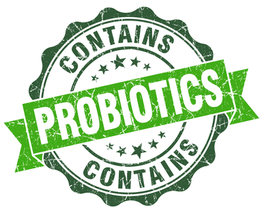|
Depending on how much you know about probiotics I may, or may not, be about to rock your world….! Think of probiotics like vitamins. The word vitamin encompasses a broad range of vitamins such as B12, folate, Vitamin D, Vitamin E, Vitamin C, Vitamin A etc.
If you were found to have Vitamin D deficiency - would you go out and buy anything that said vitamin on the bottle, or would you specifically go out and obtain vitamin D? Of course you would want Vitamin D, as to correct the deficiency, only that particular vitamin will do the job. The same goes for probiotics. Before we go any further let’s take a quick moment to talk about how probiotics are classified. There are 3 components to probiotic classification - genus, species and strain. When talking about a well known probiotic like Lactobacillus Acidophilus - Lactobacillus is the genus and Acidophilus is the species, but probiotics can be further classified by their STRAIN. This is listed AFTER the genus and species - for instance Lactobacillus Rhamnosus GG (GG being the strain). The difference between strains can be enormous, even if the probiotics are from the same species (ie - Lactobacillus Rhamnosus HN001 may have a very different effect on the body than Lactobacillus Rhamnosus GG) So back to our vitamin analogy. If you are just generally feeling a little sub-optimal, you might take a multi vitamin. It’s not specifically targeted to do anything specific, but for general ‘maintenance’ it will probably do what you need it to (providing it’s a good quality one!) But if you were trying to treat a specific condition, a multi vitamin is not going to have enough of the right ingredients in it to do the job. So how does that relate back to probiotics? If you’ve just taken a course of antibiotics, you might take a probiotic to help replenish the good bacteria you’ve lost. If this is all you are trying to achieve, a good quality multi-strain probiotic MAY suffice, however if you are trying to treat a specific condition you need to be taking the right strains for the job. So how do you know what those strains are? Sometimes there are situations where we can use specific probiotic strains based on the condition we are trying to treat as there have been studies published that prove effectiveness. There are other times where it is important to know exactly what is going on in YOUR gut at that particular time. A few examples include anxiety, chronic fatigue, fibromyalgia, IBS or autoimmune disease. Are there pathogenic bacteria that have taken hold? Or are there specific beneficial bacteria that are missing? This is information that can really make a significant impact on treatment. Stool testing can cost anywhere from $250 - $800 depending on what test is required (the average test I send people for costs $350 - $450*), which is a figure that many people, understandably, hesitate at spending. However to put it into perspective, it is quite easy to spend the equivalent amount in supplements that may be the wrong ones. Knowing what you are treating streamlines the process, reducing the amount wasted on ineffective treatments, and rewards you with better clinical outcomes. A great friend and mentor of mine likens it to playing darts blindfolded. You can still throw the dart at the dartboard, but you have a much better chance of hitting the bullseye without the blindfold on. Rebecca Milham - Naturopath & Nutritionist The Natural Health and Wellness Clinic www.thenaturalclinic.com.au *For the record, I don’t profit from any testing - there are no kickbacks, no incentive schemes, and no markups on testing.
1 Comment
Leave a Reply. |
Archives
February 2024
Categories
All
|

 RSS Feed
RSS Feed